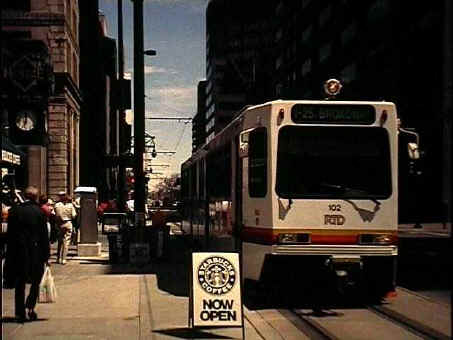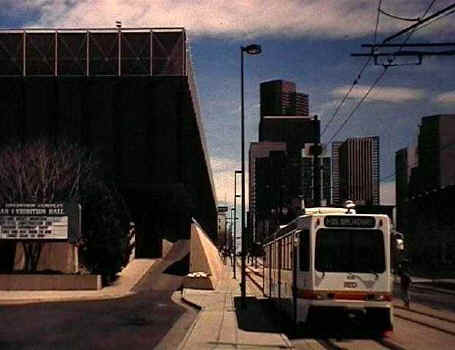 |
Light rail is versatile. LRVs can operate on the street downtown, as shown here, making frequent starts and stops in city traffic. Away from downtown, on tracks separated from streets and roads, light rail vehicles can travel 50 miles per hour or faster. |


